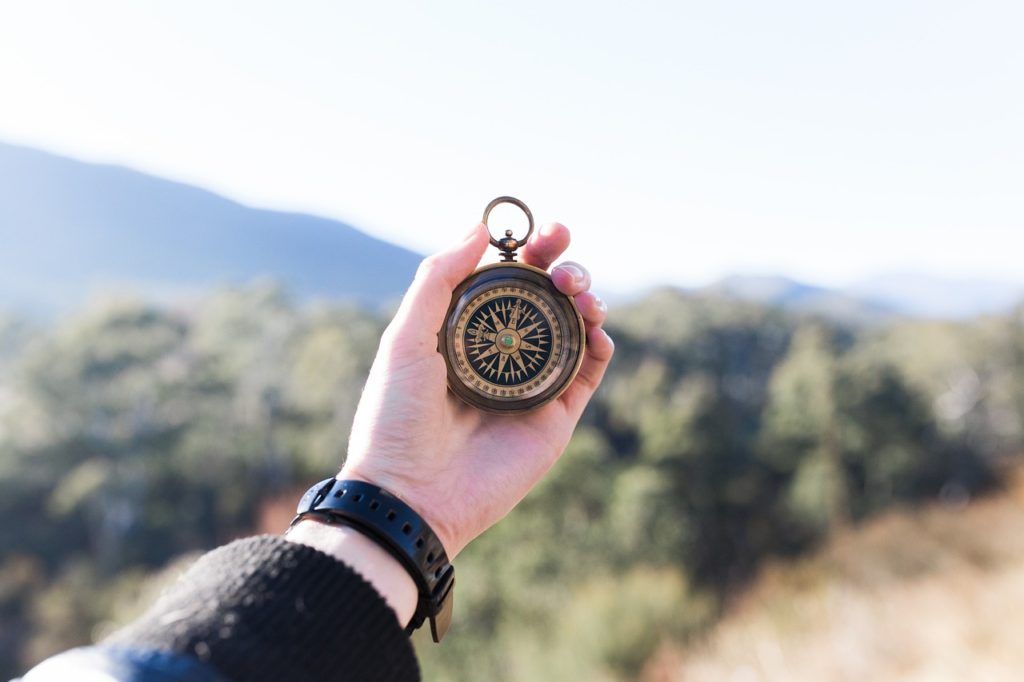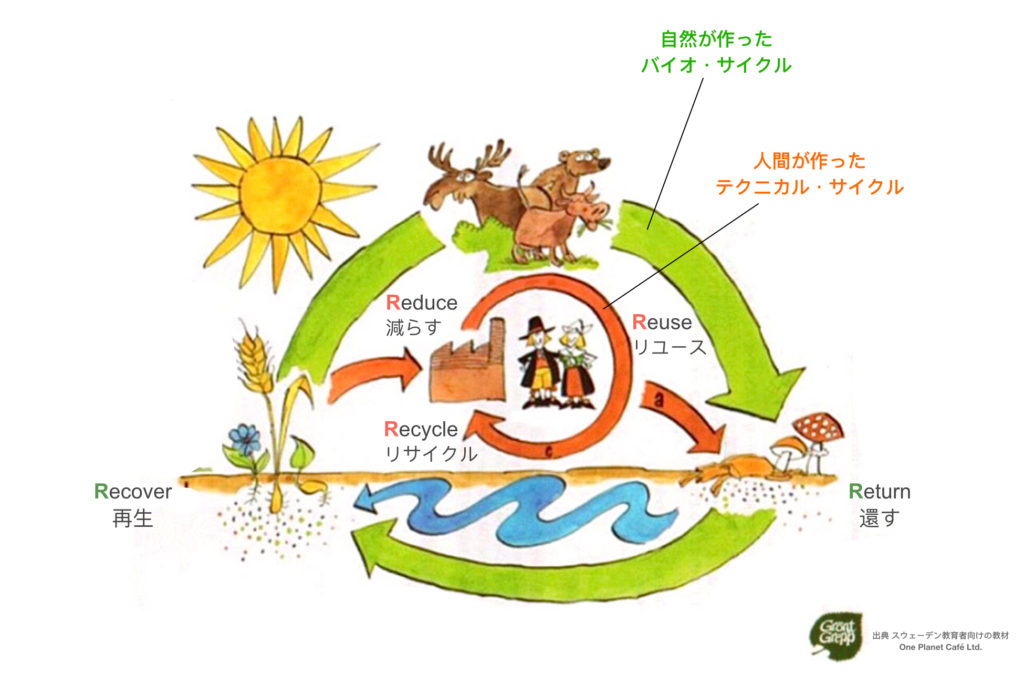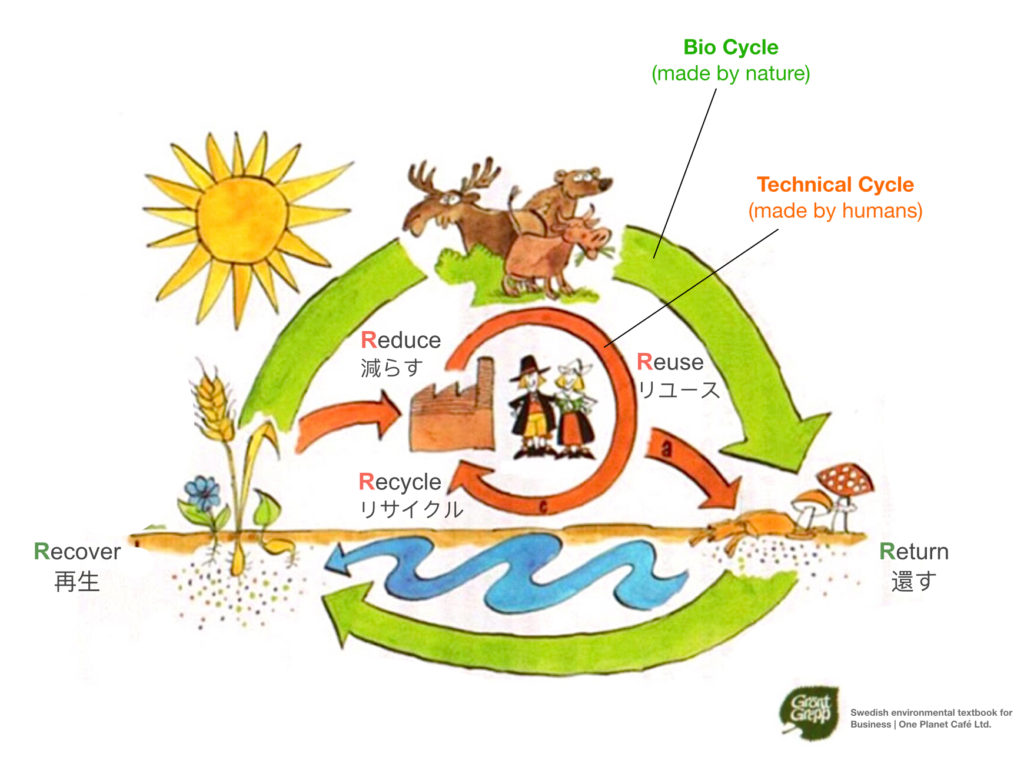
The Compass サステナビリティのコンパス
2022.12.23
Imagine a “compass” towards Sustainability! (English below)
気候変動、資源枯渇、廃棄物、生物多様性の減少など、環境問題は多様で、多岐に渡り、どう解決していけば良いか迷ってしまうこともあります。
そういった環境問題を解決するための「魔法の鍵」を何らかの方法で見つけたとしたら、どうでしょう。
サステナビリティの取り組みを、正しい方向で進めるためのコンパス!

それは、スウェーデン語では、Kretsloppet(クレツロッペット)と呼ばれ、「環境循環」を表します。
弊社でも20 年以上にわたり、この「コンパス」を、研修や取り組み支援、そして個人の日々のアクションに活用してきました。もちろん、バナナペーパー事業でも!
直感ではなく、科学に基づき、国や地域、取り組み領域を問わず活用できる、サステナビリティ原理原則、Kretsloppet クレツロッペットがこちらです:

最近注目が集まる「サーキュラー エコノミー(循環型経済)」も、その達成には2つの大切な循環(サイクル)に従う必要があります。
循環 1: Technical Cycle テクニカル サイクル
これは、図の中央にある「赤」のサイクルです。
皆さんよくご存じの「3R」が存在する場所です。
Reduce (減らす) 、Reuse (リユース) 、Recycle (リサイクル)
これは、私たち人間が社会の中で、技術を使ってまわすサイクルです。
自然を回復(再生)させるためには、このテクニカルサイクルの範囲内で、資源を可能な限り長く維持することが重要です。
循環 2: Bio Cycle バイオサイクル
これは、テクニカルサイクル外に存在する「緑」のサイクルです。多くの人がまだ知らない「2R」が存在する場所です。
Recover (リカバー /再生) とReturn (リターン/還す) があります。
これは、自然がいのちのつながりを使ってまわすサイクルです。
私たち人間は、これまでこのバイオサイクルをよく無視してきました。しかし、この循環こそが、自然界の中では環境問題がほとんど生まれない理由です。
この原理原則では、「自然が回復できる以上のものを、自然から奪ってはいけない」ということが示されています。サーキュラーエコノミーへの道は「循環型経済」だけではなく、「環境循環型経済」の視点が必要ですね。
そして、ここに嬉しいニュースがあります。
これら5つのRを、製品、サービス、エネルギーなどのあらゆる選択において、判断基準にすることができれば、余分なCO2や「ゴミ」と呼ばれるものはなくなり、自然界と同じように、様々な資源が形を変えながら常に循環するようになります。
ENGLISH
The Compass
Imagine if we somehow found a “magic key” to solving environmental problems like climate change, waste, and biodiversity loss?
A compass.

“Kretsloppet” may be it!
Kretsloppet has been taught and learned in Sweden since the 1990’s. We at One Planet Café Ltd. have used this “compass” for many years as well. In consulting and workshops, and in real actions – from eco-renovating apartments in Japan to our climate positive & fair trade banana paper in Zambia.
And it WORKS!
SCIENCE – NOT INTUITION
The environment – the very basics for Sustainability – is not a matter of intuition.
It’s science.
If we look at nature, we can see no waste, no extra CO2, and very seldom any over consumption of a resource faster than it can be replenished.
Every species in nature – from bees to elephants to fish – are moving around using 100% renewable energy. At the same time, poverty and unemployment is almost always at a staggering 0%!
Learning from what the ant, bird and elephant already know, we will see what’s “environmentally correct” instead of environmentally friendly.
The conclusion is that there is a set of rules in nature. Everyone except us humans has known this for a very long time. Nature have figured out “rules” we call “The Principles”.
It’s like the RECIPE we need when baking a cake, or RULES for playing football. Once knowing the Principles for sustainability, we don’t feel lost anymore. It becomes easier to take the right decision towards sustainability.
So let’s take a look at how some of those Principles work:

KRETSLOPPET
The most important rules exist in natures eco cycle.
There are TWO major circles we must follow to achieve – what’s recently called – “circularity” (circular economy).
CIRCLE 1: Technical Cycle
This is the RED cycle in the middle of the illustration.
This is a cycle created by us HUMANS, inside our society.
To let nature recover – or regenerate – it is important we keep things within this Technical Cycle as long as possible.
This is where the famous 3R exists:
Reduce, Reuse, Recycle.
CIRCLE 2 – Bio Cycle
This is the GREEN cycle (outside the Technical Cycle).
This cycle is created by NATURE. We humans have often ignored this cycle. But this cycle is the key to why there is almost no environmental problems in Nature.
And here are two other R:
Recover and Return.
What this “Principle” says, is “Do not take more from nature, than nature can recover”.
And here is the good news: once we put all those 5R together and let it guide us in our decisions towards products, services, energy etc, we will see CO2 and waste drop fast. Nature and biodiversity is given the chance to re-generate fast. And we could be on our way to reach the same levels as in Nature!

